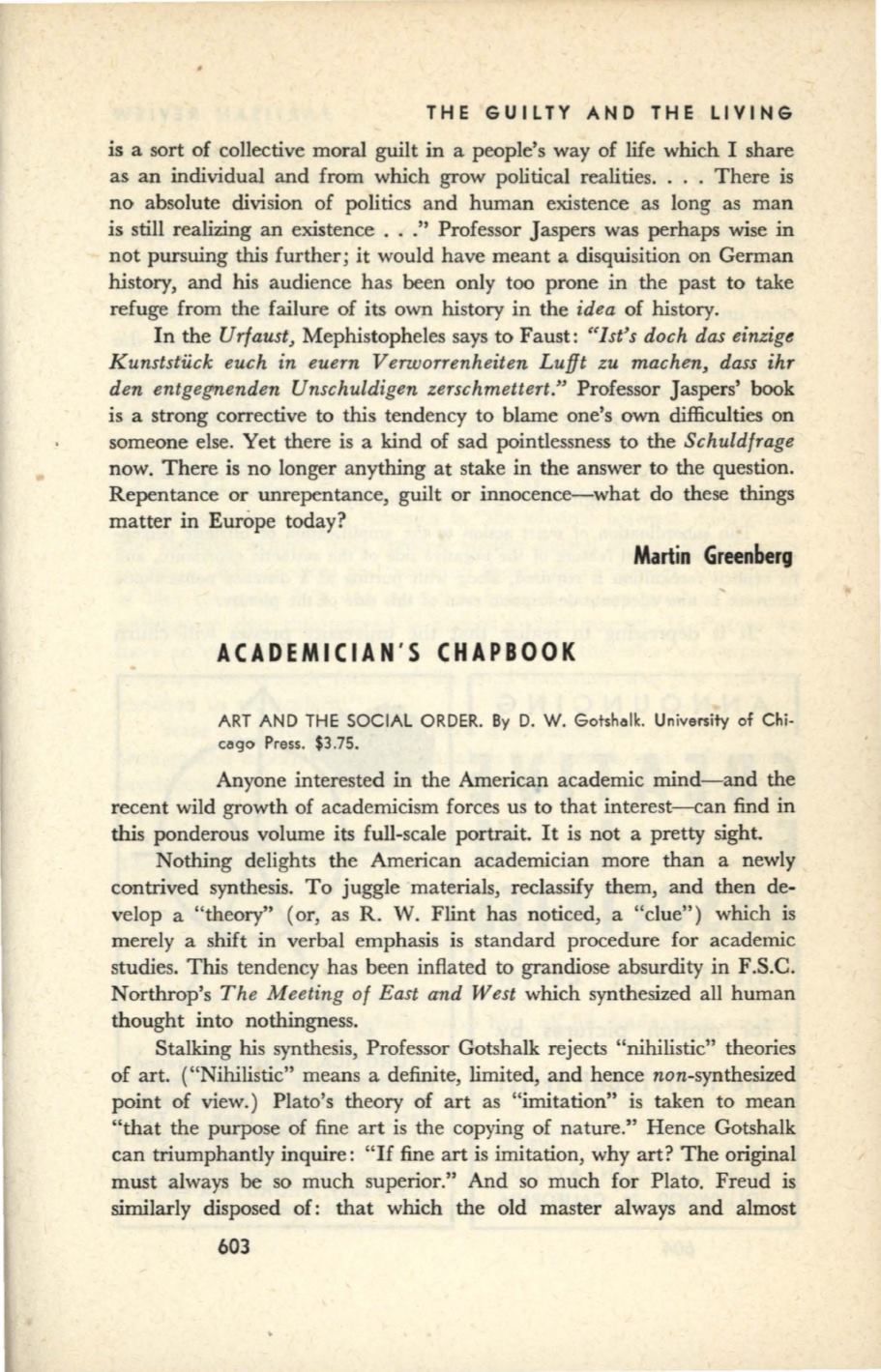
THE GUILTY AND THE LIVING
is a sort of collective moral guilt in a people's way of life which I share
as an individual and from which grow political realities.... There is
no absolute division of politics and human existence as long as man
is still realizing an existence ..." Professor Jaspers was perhaps wise in
not pursuing this further; it would have meant a disquisition on German
history, and his audience has been only too prone in the past to take
refuge from the failure of its own history in the
idea
of history.
In the
Urfaust,
Mephistopheles says to Faust:
"1st's doch das einzige
Kunststuck euch in euern Verworrenheiten Luf!t zu machen, dass ihr
den entgegnenden Unschuldigen zerschmettert."
Professor Jaspers' book
is a strong corrective to this tendency to blame one's own difficulties on
someone else. Yet there is a kind of sad pointlessness to the
Schuldfrage
now. There is no longer anything at stake in the answer to the question.
Repentance or unrepentance, guilt or innocence-what do these things
matter in Europe today?
Martin Greenberg
ACADEMICIAN'S CHAPBOOK
ART AND THE SOCIAL ORDER. By D. W. Gotshe.lk. University of Chi–
cogo Press. $3.75.
Anyone interested in the American academic mind-and the
recent wild growth of academicism forces us to that interest-can find in
this ponderous volume its full-scale portrait. It is not a pretty sight.
Nothing delights the American academician more than a newly
contrived synthesis. To juggle materials, reclassify them, and then de–
velop a "theory" (or, as R. W. Flint has noticed, a "clue") which is
merely a shift in verbal emphasis is standard procedure for academic
studies. This tendency has been inflated to grandiose absurdity in F.S.C.
Northrop's
The M eeting of East and West
which synthesized all human
thought into nothingness.
Stalking his synthesis, Professor Gotshalk rejects "nihilistic" theories
of art. ("Nihilistic" means a definite, limited, and hence non-synthesized
point of view.) Plato's theory of art as "imitation" is taken to mean
"that the purpose of fine art is the copying of nature." Hence Gotshalk
can triumphantly inquire:
"If
fine art is imitation, why art? The original
must always be so much superior." And so much for Plato. Freud is
similarly disposed of: that which the old master always and almost
603


